人教版新目标初中英语九年级下册By the time I got outside, the bus had already left教案
-
- 页数:38页
- 字数:约 56144 字
- 大小:208.50KB
- 格式:.doc
- 版本:Office2016及以上版本
- 作者:陈杰出品
By the time I got outside, the bus had already left教案
The First Period
Ⅰ. Teaching Aims and Demands
1. Knowledge Objects
(1) Key Vocabulary
oversleep
(2) Target Language

What happened?
I overslept. And by the time I got up, mybrother had already gotten in the shower.
2. Ability Objects
(1) Teach the students to use the new words.
(2) Train the students to narrate past events with the Past PerfectTense.
(3) Train the students listening and speaking skills with the targetlanguage.
3. Moral Object
It’s a good habit to go to bedearly in the evening and get up early in the morning. So you’ll never be in a hurryin the morning.
Ⅱ. Teaching Key Points
1. Key Vocabulary
oversleep
2. Target Language
Narrate past events with the Past PerfectTense
Ⅲ. Teaching Difficult Points
1. Train the students to narrate past events with thePast Perfect Tense.
2. Train the students to understand the targetlanguage in spoken conversation.
Ⅳ. Teaching Methods
1. Thinking of examples from the students real lives.
2. Making sentences by looking at the pictures.
Ⅴ. Teaching Aid
A tape recorder
Ⅵ. Teaching Procedures
Step I Revision
1. Revise the language points in Unit 8.
Ask some questions like this: What volunteerwork would you like to do?
Help the students to answer, I’d like to…/I love to…/I hope to
2. Practice the dialogue in Activity 3c on page 62again. Getstudents to role play the similar dialogues with the following.
SA: I’d like to join the schoolvolunteer project, but I’m not sure what I should do.
SB: What do you like doing?
SA: I love playing football.
SB: Well, you could help coach afootball team for little kids. Let the children practice in pairs.
3. Check the students homework by asking somestudents to read their sentences with the phrasal verbs. Then ask the students to handin their homework.
4. Dictate the following words:
clean up, cheer up, give out, put off, set up,run out of, take after, fix up, give
away, call up, hand out, work out, hunger,establish, commitment, veterinarian, strategy
Step Ⅱ 1a
This activity introduces newvocabulary which can be used to narrate past events.
First write by the time on theblackboard. and tell the class the meaning of it.
"by the time" meansnot later than, before, as soon as, or when the indicated comes. When we use the words. "By the time…, "we are talking abouttwo different things that happened in the past. Say this sentence to the class: By the time theteacher came in, the students had begun reading English.
Tell them to note the struture"had begun" in this sentence. Begun is the past participle of begin. When we talk about two eventsboth happened in the past, the one which happened earlier should use and plus apast participle. The words following By the time…, talk about the thing that happened later. And tell the students whenthey use had plus a past participle, they are using the Past Perfect Tense. Also explain what is the pastparticiple form of a verb for the students. Tell them it is as the same as the past form for aregular verb. And they have to remember the irregular verbs’ participles one byone.
Play a game to help thestudents understand the sentences with the words By the time…Do it like this:
Pretend that the teacher willleave the classroom and the students will do some things. When the teacher returns. the class will make statementsstarting with By the time
Write By the time I came back…on the blackboard.
Say to the class, By the time Icame in. whathad happened?
Help one student to answer likethis, By the time the teacher came in, Don had written his name on theblackboard.
Then get more students toanswer differently, such as,
By the lime the teacher camein, we had discussed an English problem.
By the time the teacher camein, I had drawn a picture.
Write these sentences on theblackboard, and teach the students to read several times.
Read the instructions to thestudents and read these questions to the class as well.
What do you usually do in, themorning before school? Do you like morning?
Why or why not?
Choose one good student toanswer them by saying something he or she usually does in the morning.
He or she may answer like this,
I usually get up early, wash myface and have breakfast. I like mornings because the air is fresh, or I usually get up aslate as possible. Then I have to wash my face and have breakfast in a hurry. I often rush to school withoutbreakfast. Sometimes I forget something at home. I don’t like mornings becauseI am always too busy.
Then have the whole classpractice in pairs. Ask each other the questions.
After they finish talking, askone or two pairs to say their conversations to the class. Correct the mistakes they maymake with the other students.
Call the students attention tothe pictures in Activity la. Ask students to tell what they see.
Say, Any sentences which makesense are accepted to describe the pictures.
The girl in the pictures isTina.Present the new words by providing sentences showing the meanings of them likethis:
T: What can you see in Picture1?
S1: She slept a longtime.
T: That’s correct. She slept too late. She overslept. Class repeat. She overslept.
Ss: She overslept.
T: What do you see in Picture2?
S2: Her brother orsister is in the bathroom.
T: That’s correct. She wants to go into thebathroom. Shecan’t because someone is taking a shower. Class repeat. Someone is taking a shower.
Ss: Someone istaking a shower.
Write these words on theblackboard:
overslept, taking a shower, hadleft, left her backpack at home.
Then tell students to talkabout the pictures in groups of four. Move around the classroom, listening to studentsand offering help. Make sure that they talk in English.
After they all finish talking,ask different groups to tell the class about the pictures. They may say like this:
Tina overslept in the morning. She wanted to go to thebathroom, but her brother had already gotten in the shower. When she got to the bus stop,the bus had already left.
She had to run to school. After she got to school, sherealized she had left her backpack at home. The sentences can vary, but should be correct.
Step Ⅲ 1b
This activity gives studentspractice in understanding the target language in spoken conversation.
Ask the students to read theinstructions together. Have them look at the two columns, A and B ,in the chart. Point out the sample answer. Read the two parts of thesentence.
Then go over the otherunconnected parts of sentences, too.
You will connect the two partsof the sentences, connect a sentence beginning in the first column with the endof that sentence in the second column. Please guess the other two sentences before I playthe tape.
I guess most of the childrencan get the correct sentences by guessing. So just let them guess. Don’t tell them whether theiranswers are right or wrong.
OK, just keep your answers byguessing.
Let’s decide if they are rightby listening to the tape now.
Play the recording for thefirst time.
Students only listen. Then play it a second time. Let students match two partsof each sentence. Check the answers by asking some students to tell their answers.
Make sure that all of them havegot the correct answers by listening. Say congratulations to the students who get theanswers correctly by guessing.
Answers
1. b 2. a 3. c
Tape script
Boy: Hi, Tina. You look stressed out.
Girl: I am. I had a bad morning.
Boy: Really? What happened?
Girl: Well, first of all Ioverslept. By the time I got up, my brother had already gotten in the shower.
Boy: Oh, what a pain!
Girl: So, after he got out ofshower, I took a quick shower and got dressed. But by the time I went outside, the bus had alreadyleft.
Boy: Oh, no!
Girl: Oh, yes! So I ran all theway to school. But when I got to school, I realized I had left my backpack athome.
Boy: No wonder you lookstressed out.
Step Ⅳ 1c
This practice provides guidedoral practice using the target language.
First play the recording inActivity 1b
again and let the students readafter it. Do itat least twice.
Then read the instructionstogether with the whole class.
You will make conversations inpairs. Eachof you will have to take turns being Tina. Look at the pictures in Activity la to help you. Tell your partner whathappened to you this morning. Ask a pair to read the example to the class before they beg it
SA: What happened?
SB: I overslept. And by the time I got up, mybrother had already gotten in the shower.
Write the conversation on theblackboard.
Have the students work in pairs. Move around the room offeringlanguage support as needed.
After they all finish talking,ask some pairs to say their conversations to the class.
Step Ⅴ Summary
Say, In this class, we’velearned how to narrate past events, using the Past Perfect
Tense. We’ve also done some listeningpractice in understanding the target language in spoken conversation. Also, we’ve done much oralpractice using the target language.
Step Ⅵ Homework
1. Write out the story of Tina, Note to use the targetlanguage.
2. Revise when to use the Past Perfect Tense and theverb structure of it.
Step Ⅶ Blackboard Design
By the time I got outside, the
bus had already left.
Section A
The First Period
1. By the time
By the time the teacher came in, the students had begun reading.
By the time the teacher came in, Don had written his name on the blackboard.
By the time the teacher came m, we had discussed an English problem.
2. Some words to describe the pictures overslept, taking a shower, had left, left her backpack at home.
3. Target Language:
A: What happened?
B:I overslept. And by the time I got up, my brother had already gotten
in the shower.
By the time I got outside, the bus had alreadyleft.
The Second Period
Ⅰ. Teaching Aims and Demands
1. Knowledge Objects
(1) Target Language
By the time she got to class, the teacher hadalready started teaching.
When she got to school, she realized she hadleft her backpack at home.
When I got home, I realized I had left my keysin the backpack.
(2)The Three Forms of the verbs.
2. Ability Objects
(1) Train the students listening skill.
(2) Train the students writing skill with the target language.
(3) Train the students speaking skill.
(4) Train the students to use the three forms of the verbs.
3. Moral Object
Try to be a careful person anddo everything carefully. Remember not to be as careless as Tina.
Ⅱ. Teaching Key Points
1. Listening practice with the target language.
2. Use the correct verb forms to fill in the blanks bylistening.
3. Make sentences using the Past Perfect Tense.
4. The three forms of the verbs.
Ⅲ. Teaching Difficult Points
1. Write an ending for the story in Activity 2c.
2. The three verb forms in Grammar Focus.
Ⅳ. Teaching Methods
1. Listening
2. Pairwork
Ⅴ. Teaching Aids
A tape recorder
Ⅵ. Teaching Procedures
Step I Revision
1. Revise what happened to Tina in the morning byasking one or two students to tell the stroy on page 68.
They may say like this:
Tina had a bad morning. First of all she overslept. By the time she got up, herbrother had already gotten in the shower.
And by the time she wentoutside, the bus had already left. She had to run all the way to school. When she got to school, sherealized she had left her backpack at home. All these made her look stressed out. After that, ask the wholeclass to work in pairs, telling the stroy and helping each other in turns. Remind them to use the correctverb forms.
2. Ask students to check each other’s homework inpairs, pointing out all the mistakes they might have made.
3. Revise the Past Perfect Tense by asking thechildren when to use it and what its verb structure is.
Step Ⅱ 2a
This activity provides guidedlistening practice using the target language.
We have known Tina had a badmorning.
But something worse happened toTina later. Let’s go to Activity 2a on page 69 and see what happened to Tinalater in the morning.
Read the instructions to theclass. Besure that all of them know what to do.
Call the students attention tothe four pictures. Get them to guess the correct order of the pictures first. The first one is given as asample. Askone or two children to tell their stories by describing the pictures accordingto their own order.
Then, we will hear Tina talkingabout what happened to her after she got to school. We can see there is a smallbox in each picture.
Please write a number from 1 to4 in each box to show each picture’s correct order.
The first one has been given asa sample.
Get the children to get readyto listen to Tina continue her story.
Play the recording the firsttime, students only listen. Play the recording again and ask the children to number eachpicture.
Check the answers with theclass and see who have ever got the correct answers without listening.
Answers
The pictures should be numberedin this order:
3 1 2 4
Tape script
Boy: So then what did you do,Tina?
Girl: Well, I ran home to getmy backpack.
But when I got home, I realizedI had left my keys in the backpack.
Boy: You’re kidding!
Girl: So I ran back to schoolwithout my keys or my backpack. And by the time I got back to school, the bell had rung.
Boy: Oh, no!
Girl: And by the time I walkedinto class, the teacher had started teaching already. She asked for our homework,but of course I didn’t have it.
Step Ⅲ 2b
This activity gives studentspractice in understanding and writing the target language.
Ask the students to read theinstructions together. Point out the blanks in the sentences and the verbs in thebrackets.
This activity has two parts. First let’s fill in the blankswith the correct verb forms. We can see some verbs in the brackets. They are the base forms of thegiven verbs. For example, get and got, Get is the base form of the verb. Your job is to write thecorrect forms of these verbs in the blanks. Look at number one.
A sample answer is given.
Let the students fill in theblanks with the correct forms individually.
Move around the classroomcollecting the common mistakes they may make.
After they all finish writing,tell them to get ready to listen to the conversation and check their answers.
I will play the recording again. Please check your answers andcorrect any mistakes you might have made while listening. Play the recording. Students listen and checktheir answers. Correct the answers by asking seven different students to saytheirs to the class.
Answers
1. got home 2. realized 3. had left
4. got 5. had rung 6. walked 7. had started
Step Ⅳ 2c
This activity gives studentsoral practice with the target language.
Ask the whole class to read theinstructions together.
We have a new task now. We know Tina was late forclass. Whatdo you think happened after Tina was late for class?
Work with a partner. Make up an ending for the storyby continuing it. The beginning has been given.
Get students to discuss inpairs.Complete the ending. Make sure they are talking in English. Move around the classroom,offering language support if needed. After ten minutes, ask students to stop discussing. Get some pairs of students totell the class how they think the story ended And let the whole class decidewhose ending is the best. Tell each pair to write down their ending, or do it after classif time is not enough.
Sample ending of the story
The teacher looked at Tina andsaid, " Why are you late and where is your homework, Tina?" "Ihad a bad morning today. " Tina said sadly.
"I’m sorry to hear that,but may I know what happened? said the teacher.
Then Tina told the teacher andthe whole class her story. All her classmates laughed loudly after it. Some of them said, "PoorTina!"
Bob, one of Tina’s classmates,stood up and said, "Well, Tina, I’d love to help you. Why not let me keep the keysfor you? I would put your keys in my backpack."
Step Ⅴ Grammar Focus
This activity introduces thetarget language of this unit. Call students attention to the sentences on the left. Ask four different students toread the four sentences and point out where had plus a past participle is used. Write the sentences on theblackboard.
Draw a simple time line foreach sentence to help students to understand the grammar focus. For example:

Then get the students to lookat the box.
Teach students to read thethree forms of each verbs first. Then ask several students to read the verbs to the class to seeif they can read. Write the verbs on the blackboard.
Ask the students to makesentences correctly using each form of the verbs in the box. For example:
I usually get up at 6:30.
I got up at 5:30 yesterday.
By the time I got up, my sisterhad already gotten in the shower.
Tell the students when we talkabout the first thing that happened. We use had plus a past participle (had gotten) and when we talk about thesecond thing that happened, we use the simple past tense (got up). Ask some to read theirsentences to the class.
Ask the students to make theirown lists of other verbs used in this unit. Tell them to put the lists in their notebooks usinga three-column format like the one in the Look! section. The lists have to includethese verbs; leave, walk, start, oversleep, ring, be.
Check the answers.
Some sample sentences with thethree verb forms
1. I got up at 6:30 every day.
I got up at 6:00 yesterday.
By the time I got up, my sister had alreadygotten in the shower.
2. We usually go to school at 7:30.
We went to school at 8:30yesterday.
By the time we got to theclassroom,
the students had gone to thechemistry lab.
3. My father leaves home at 8:30.
He left home at 9:30 thismorning.
When my father went outside,the bus had left.
4. The teacher often starts teaching at 9:00.
The teacher started teaching at 8:30 the daybefore yesterday.
When Tina got to class, the teacher hadalready started teaching.
The three forms of the verbs used in thisunit:
Leave left left
Walk walked walked
start started started
oversleep overslept overslept
ring rang rung
Be was/were been
Step Ⅵ Summary
Say, In this class, we’ve donemuch listening and writing practice with target language. We’ve also done some oralpractice in pairs. And we’ve discussed the Grammar Focus of this unit.
Step Ⅶ Homework
1. Write down the ending of Tina’s story.
2. Make sentences using each form of the verbs below:
leave, walk, start, oversleep,ring, be
3. Review the Grammar Focus.
Step Ⅷ Blackboard Design
By the time I got outside, the
bus had already left.
Section A
The Second Period
Target Language:
1. By the time she got up, her brother had already gone into the bathroom.
2. By the time she went outside, the bus had already gone.
3. By the time she got to class, the teacher had already started teaching.
4. When she got to school, she realized she had left her backpack at home.
Verbs:
Get got gotten
Go went gone
Leave left left
Start started started
By the time I got outside, the bus had alreadyleft.
The Third Period
Ⅰ. Teaching Aims and Demands
1. Knowledge Objects
(1) Key Vocabulary
bell, ring, go off, rush, runoff, on time, give sb. a ride, lock, break down
(2) Target Language
By the time I got there, the bus had alreadyleft.
By the time I woke up, my father had alreadygone into the bathroom.
2. Ability Objects
Train the students reading skill with targetlanguage.
Train the students speaking skill with targetlanguage.
3. Moral Object
Have you ever done anything carelessly?
Share your story with your friends.
Ⅱ. Teaching Key Points
1. Guide the students to read the article in activity3a.
2. Help the students do the oral practice with thetarget language.
Ⅲ. Teaching Difficult Points
1. Help improve the students reading skill byActivity 3a.
2. Help the students describe what has happened tothem with the target language.
Ⅳ. Teaching Methods
1. Get the main idea by reading.
2. Pairwork.
Ⅴ. Teaching Aid
A projector
Ⅵ. Teaching Procedures
Step Ⅰ Revision
1. Revise what happened to Tina by asking several studentsto tell the story.
2. Revise the three forms of the verbs in GrammarFocus by asking four students to write them out on the blackboard.
3. Check homework by asking one or two to read theirown endings of the stroy.
4. Check homework by asking some students to read thesentences which they made.
5. Ask the students to hand in their homework.
Some sample sentences with theverbs used in this unit:
1. I leave home at 7:30 every morning.
I left home at 8:00 thismorning.
By the time I got to the airport,the plane had left.
2. I walk to school sometimes.
I walked to school yesterday afternoon.
When I got there, the sick girl had walk away.
3. The meeting start at 3:00 every Wednesday afternoon.
The meeting started at 3: 30 last Wednesdayafternoon.
As soon as Mr. Jones got to the meeting room, the meeting hadalready started.
4. Tina seldom oversleeps.
Tina overslept this morning.
Tina said she had never overslept before.
5. The hell rings at 8:10 every morning.
The bell rang at 7:10 this morning.
When I got to school, the first bell had rung.
6. I am here now.
I was at home last night.
I had been here for 20 years by the end of2003.
Step Ⅱ 3a
This activity provides readingand writing practice using the target language.
Show the vocabulary on thescreen by a project:
bell n.钟;铃
ring v.鸣;响
go off 闹钟(闹响)
rush v.冲;奔
rush off 跑掉;迅速离开
on time 准时
give sb. a ride让某人搭便车
lock v.锁;锁上
break down 损坏;坏掉
Point to the words one by oneand teach the students to read them. Do it several times. Then ask several students to read the words to seeif they can pronounce each word correctly.
Ask the whole class to read theinstructions together. There is an article in Activity 3a. Your task is to read the story and write the eventsin the correct order.
Have a look at the sampleanswer on the right of the article before you start. Then let the children completethe work on their own. After a while, ask some students to report their answers to theclass. Writethe events on the blackboard as they report, putting the events in the correctorder.
After checking the answers,tell students to read the article again more carefully.
Tell them to find out the wordsor sentences which they can’t understand this time.
A few minutes later, let thestudents ask questions on the words and sentences which they can’t understand. Do some explanation and makesure that the students make everything clear about the article.
Then ask the students to readthe article aloud. Move around the classroom while they are reading, offering helpas needed.
Next ask students to pick outthe sentences with the Past Perfect Tense. Tell them to underline them and come up with thereason to use the tence.
Ask two students to read theiranswers and explain the sentences.
Answers
1. alarm clock didn’t go off
2. father went to bathroom
3. woke up late
4. took shower
5. had some breakfast
6. bus left
7. ran to bus stop
8. started walking
9. got a ride with a friend
10. bell ringing
11. got to school
12. got to class
Sentences with the Past PerfectTense in the article:
1.…by the time I woke up, my father had already gone into thebathroom and
2. Unfortunately, by the time I got there, the bus hadalready left.
Step Ⅲ 3b
This activity provides readingand writing practice using the target language.
Call the students attention tothe photo of the woman sleeping. The girl is sleeping. She may oversleep. How about you?
Have you ever overslept?
Get a students to answer thequestion simply, such as Yes, I have. /No, I haven’t.
Then ask one student to readthe instructions to the class.
We can see six questions in thebox.
You’ll have to read thequestions in the box and you have to describe the circumstances in which thesethings happened.
Explain that describe thecircumstances means to tell when, where and how the things happened.
Ask one student who has everoverslept to answer the first question and describe the circumstance. Help him or her use the PastPerfect Tense to describe the circumstance.
Then ask students to read thequestions and write their answers in their exercise books. Tell them that they have todescribe the circumstances if their answers are Yes, and there should be atleast one sentence with the Past Perfect Tense in each description. Move around the classroomproviding sentences to the ones who need. Ask several students to share their stories withthe class. Correct any mistakes they may make. Let them check the answers in pairs.
Step Ⅳ 3c
This activity provideslistening and speaking practice using the target language. Ask the whole class to readthe instructions together. Then call the students attention to the sample conversation onthe right. Ask a pair of the students to read the conversation to the class. Please ask your partner thequestions in Activity 3b. Ask more questions if he or she says "Yes".
Ask the students to work inpairs.Encourage them to ask as many questions as they can. As they work, move around theroom offering help and answering questions as needed. Ask some pairs to say theirconversations to the class.
Step Ⅵ Summary
Say, In this class, we’velearned an article. And we’ve done much practice in reading, listening, speaking andwriting.
We’ve done much practice withthe target language.
StepⅦ Homework
1. Write the answers to the questions in Activity 3b.
2. Write a conversation in Activity 3c.
Step Ⅷ Blackboard Design
By the time I got outside, the
bus had already left.
Section A
The Third Period
Answers to Activity 3a:
1. alarm clock didn’t go off
2. father went to bathroom
3. woke up late
4. took shower
5. had some breakfast
6. bus left
7. ran to bus stop
8. started walking
9. got a ride with a friend
10. bell ringing
11. got to school
12. got to class
By the time I got outside, the bus had alreadyleft.
The Fourth Period
I. Teaching Aims and Demands
1. Knowledge Objects
(1) Key Vocabulary
costume, show up, exhausted,embarrassed, empty, fool, April Fool’s Day, go off, stay up
(2)Target Language
When I got there, I found thathe had fooled me.
After an hour, the other kidsshowed up, and I realized that my brother had fooled me.
By the time I got to matchclass, I was exhausted because I had stayed up all night studying.
I found out that my friend had fooledme.
2. Ability Objects
(1) Train the students writing, listening and speaking skills withthe target language.
(2)Train the students to use the new vocabulary.
3. Moral Object
Have you ever been fooled onApril Fool’s
Day? Share your story with yourfriends.
Ⅱ. Teaching Key Points
1. Train the students listening and speaking skillswith target language.
2. Teach the students the new vocabulary.
Ⅲ. Teaching Difficult Points
1. Guide listening and oral practice using the targetlanguage.
2. Help learn to use the new vocabulary correctly.
Ⅳ. Teaching Methods
1. Listening
2. Pairwork and groupwork
Ⅴ. Teaching Aid
A tape recorder
Ⅵ. Teaching Procedures
Step I Revision
1. Revise the article in Activity 3a on page 70 byasking several students to read it.
2. Dictate the following words and phrases:
bell, ring, go off, rush, runoff, on time, give sb. a ride lock, break down.
3. Check the homework.
Step Ⅱ 1a
This activity reviewsvocabulary, introduces some new vocabulary, and provides writing practice.
Read the instructions to thestudents.Remember to read the sentence in the brackets. Point to the chart with the three headings Nouns,Verbs and Adjectives. Read the words in the brackets to the students and help thestudents to understand the meanings of nouns, verbs and adjectives.
Teach the students to read thenew vocabulary below:
costume, show up, exhausted,embarrassed, empty, fool,
April Fool’s Day
Write them on the blackboard orshow them on a screen by a projector while teaching. Tell the children the meaningof each word and do a little explanation.
Then call the students attentionto the list of the words on the left. Ask a student to read them and tell the meanings atthe same time. Find out the words which the students don’t understand and givesome explanation.
Please put these words in thecorrect columns in the chart. Some words can be put in more than one column.
Get a student to read thesample answers to the class before they start say, Fool call also be a verb. For example, He fooled me. So it is put in both ColumnNouns and Column Verbs.
Ask the students to completethe chart on their own.
Correct the answers by askingthree students to read their answers to the class.
Answers
Nouns: fool, costume, change,clock
Verbs: fool, invite, empty, gooff, get up, get dressed, show up, realize, change, stay up
Adjectives: embarrassed, empty,exhausted
Step Ⅲ 1b
This activity provides guidedoral practice using the target language.
Ask a student to read theinstructions to the class.
Ask another student to read theexample on the right.
Work in pairs now. Tell your partner aboutsomething that has happened to you recently. Note to use two or more phrases from the list inActivity la. Get tile students to talk in pairs. Move around the classroom checking their work and offeringlanguage support as needed.
After they all finish talking,ask some pairs to say their conversations to the class.
Step Ⅳ 2a
This activity provides guidedlistening practice using the target language. Say something about April Fool’s Day to thestudents like this:
Every year on the first ofApril, Americans do silly things to surprise each other. For example, someone mighttell you to go to the teacher’s office to get your new book. But there is no book at all!
Call the students attention tothe four pictures. Ask the students what is happening in each picture.
Ask four different students todescribe the pictures. For example, ‘they can describe Picture 1 like this:
A boy was told to take part ina costume party. So he dressed himself up like a monster. But when he got there he foundthat his friend had fooled him. It wasn’t a costume party. He frightened the others.
Read the instructions to theclass.
You’ll listen to three boys,Dave, Nick and Joe, talking about April Fool’s Day.
There is a box under eachpicture where you can write each boy’s name. Now listen to the tape and write the name of eachboy under his picture. I have to tell you there will be one picture without a name underit.
Tell them to see the examplefor Picture c.
Play the tape the first time. The students only listen. Then play the tape again. Ask the students to write eachboy’s name in the correct box. Check the answers by asking different students to tell their ownanswers.
Answers
a. No name b. Joe c. Nick d. Dave
Tape script
Boy 1: Have you ever been anApril fool, Dave?
Boy 2: Yes, I have. A friend once invited me to acostume party. When I got there, I found that he had fooled me. It wasn’t a costume party. I was the only person wearinga costume. I was really embarrassed. How about you, Nick?
Boy 1: Well, last April Fool’sDay, when my alarm went off I got up, took a shower, got dressed, and went toschool. Butwhen I got there, the school was empty. I was the only one there. After an hour, the other kidsshowed up, and I realized that my brother had fooled me.
Boy 3: she had?
Boy 1: Uh-huh. He had changed the clock to anhour earlier. What happened to you on April Fool’s Day, Joe?
Boy 3: Well,I was sick lastApril first. My friend called me and told me we had a maths test the next day. By the time 1 go to mathsclass, I was exhausted because I had stayed up all night studying. Then I found out that myfriend had fooled me. We didn’t have a test at all!
Step Ⅴ 2b
This activity provides guidedlistening practice using the target language.
Read the instructions to theclass. Thereare six phrases in the box. Your task is to find out who says each of the phrases, Dave, Nickor Joe after listening to the same recording. And write "D" for Dave, "N" forNick and "J" for Joes on the short lines before the phrases. Look at the first one. The answer has been given as asample.
Play the recording the firsttime. Thestudents only listen. Then play the recording again. Ask the students to write the letters in the blanks. Ask six different students toreport their answers to the class. Check the answers with the class.
Answers
1. D 2. N 3. J 4. J 5. D 6. N
Step Ⅵ 2c
This activity provides oralpractice using the target language.
First play the recording again. Pause after each sentence andget the students to repeat.
Do it at least twice.
Ask a student to read theinstructions to the class. Then have them look at the sample conversation on the right. Ask a pair of the students toread and try to continue it like this:
SA: What happened toDave on April Fool’s Day?
SB: Well, a friendinvited him to a costume party. When he got there, he found that he had fooled him. It wasn’t a costume party. He was the only person wearinga costume. He was really embarrassed.
Then ask the students to workin pairs.
Each pair makes twoconversations using information from the earlier activities.
Move around the room as theywork, offering help as needed. Ask one or two pairs to say their conversations to the class.
Step Ⅶ Summary
Say, In this class, we’ve learnedsome new words. And we’ve done much listening and oral practice. We have enjoyed someinteresting stories happened on April Fool’s Day.
Step Ⅷ Homework
1. Write something that has happened to you recently. Use two or more phrases from thelist in Activity 1a.
2. Write a conversation in Activity 2c.
Step Ⅸ Blackboard Design
By the time I got outside, the
bus had already left.
Section B
The Fourth Period
1. Answers to Activity 1a:
Nouns: fool, costume, change, clock
Verbs: fool, invite, empty, go off, get up, get dressed, show up, realize, change, stay up
Adjectives: embarrassed, empty, exhausted
2. Target language:
A: What happened to Dave on April Fool’s Day?
B: Well, a friend invited him to a costume party. When he got there, he found that he had fooled him. it wasn’t a costume party. He was the only person wearing a costume. He was really embarrassed.
By the time I got outside, the bus had alreadyleft.
The Fifth Period
Ⅰ. Teaching Aims and Demands
1.Knowledge Objects
(1) Key Vocabulary
announce, describe, convince,panic, set off, authority, reveal, hoax,
flee/fled/fled, spaghetti,girl-friend, Show, marry, thrill, get married,
reply, ending
(2) The reading passages about April Fool’s Day.
(3) Write stories happened on April Fool’s Day.
2. Ability Objects
(1) Train the students reading skill.
(2) Train the students writing and speaking skills.
3. Moral Object
Try to collect the jokes happened on April
Fool’s Day and share them with your friends.
Ⅱ. Teaching Key Points
1. Teach the students the new vocabulary.
2. Help the students understand the three articles.
3. Guide the students to write stories happened onApril Fool’s Day.
Ⅲ. Teaching Difficult Points
1. Help the students understand the three articles.
2. Help the students write the stories happened onApril Fool’s Day.
Ⅳ. Teaching Methods
1. Reading method.
2. Write a passage using the notes.
3. Tell jokes.
Ⅴ. Teaching Aids
A project and a tape recorder.
Ⅵ. Teaching Procedures
Step I Revision
1. Revise the three boy’s stories happened on AprilFool’s Day. Ask three different students to tell their stories to the class.
2. Check the homework. Ask some students to read their stories andconversations to the class. Then have them check each other’s homework in pairs.
Step Ⅱ 3a
This activity provides readingpractice using the target language.
Show the new words andexpressions on the screen by a projector.
announce v.宣告;通告
describe v.描述;描绘
convince v.使确信;使信服
panic n.恐慌;惊恐
set off 激起;引起
authority n.权威机构;行政管理机构
reveal v.揭示;揭露
hoax n.骗局;恶作剧;玩笑
flee n.逃跑;逃走
spaghetti n.意大利式细面条
girlfriend n.女朋友
show n,演出;展示;炫耀
marry v.嫁;娶;与……结婚
thrill v.回答:答复
ending n.结局;结尾
get married 结婚
reply v.回答;回复
Call the students attention tothe screen.
Point to the words on thescreen one by one.
And Teach the students to readthe words several times. Make sure that the students can read each word correctly.
Read the instructions to thestudents.
You’ll have to read threearticles. Thethree articles are about three different stories happened on April Fool’s Day.
Not all of them are true. Tell which of these stories isthe most believable and which is the least believable. And you have to tell thereasons as well. At last, think over if you would be fooled by any of the stories.
Read the first article to theclass. Thestudents look at their books, listen to the teacher and find out the answers tothe questions in the instructions.
After reading, ask the studentsif it is believable and why. Ask several students to tell their opinions on the believe abilitythe first article. They may say like this:
I think it is believablebecause the exact time and person’s name are given in the first sentence, or, Idon’t think it’s believable because I think no one dared to fool the peoplelike that.
Do the same with the twoarticles left.
Ask two good students to readthe articles instead of the teacher. Elicit students reasons for their answers. At last tell the students thecorrect answer.
Answers
The first story really happened. The radio program was called"The War of the World."
Step Ⅲ 3b
This activity provides readingand writing practice using the target language.
Read the instructions to theclass. Playthe recording again to help the students.
Ask three different students toread the notes to the class.
Help the students makesentences with the notes first.
Look at the first line of thenotes, please.
Let’s see what happened firstby making sentences using the notes.
Let the students make sentenceswith the phrases given in the first line orally, based on the story happened toNick. Forexample, when the alarm went off, Nick got up, took a shower, got dressed, andwent to school. Then go on with the second line. They may say:
But when he got to school, theschool was empty, An hour later, the other kids showed up.
The sample sentence for thethird line.
He realized that his brotherhad fooled him.
After making sentences, ask thestudents to write a magazine story about Nick in
Activities 2a and 2b, using thenotes below. As they write, move around the room offering help and answeringquestions as needed.
After around ten minutes, ask astudent to read the completed article to the class.
The rest of the class helpcorrect the mistakes the student may have made. Get them to check each’ other’s writing carefullyin pairs.
A sample answer
On April Fool’s Day Nick’salarm went off. He got up and took a shower. Then he got dressed and went to school. When he got to school, thebuilding was empty.
An hour later the other kidsshowed up.
Then he realized that hisbrother had fooled him. His brother had set his alarm an hour earlier.
Step Ⅳ 3c
This activity provides writingpractice using the target language.
Read the instructions to theclass. Besure that the students know what they are asked to do. At first, have the studentsthink what they might write about.
Then tell them to make a listof ideas before starting writing. The list should include the three parts, what happened first,what happened next, and what you finally realized. They can use the notes in
Activity 3b as samples.
Write a sample list on theblackboard:
What happened first: schoolgate/met
Don/Li Lei/waiting for/on theplayground/ran to the playground.
What happened next: got to theplayground/no one was there.
What I realized: Don/fooled me
Next ask the students to writetheir jokes. Tell them they can use the article they wrote for Activity 3b asa model.
After they start to write, movearound the room providing help as needed.
Ask some students to read theirarticles to the class. Correct as many of the articles as possible in class.
A sample writing
On April Fool’s Day I met Donat the school gate. He told me that Li Lei was waiting for me on the playground. Then I ran to the playground. When I got there, I found noone was on the playground.
Then I realized that Don hadfooled me.
Step Ⅴ 4
This activity provides reading,speaking and listening practice using the target language.
Read the instructions to theclass. Reviewthe meanings of funniest, most embarrassing and most creative. Say, Each of you has to readyour joke to the class.
The class will vote on thefunniest joke, the most embarrassing joke and the most creative joke.
Have the class have a look atthe sample conversation in the box before reading.
Ask a pair of the students toread it to the class.
SA: What’s yourjoke?
SB: Well, last year,on the first day of school, my sister put a piece of paper on my back that said"Please say hello. "All day at school, many strange said hello to me.
Write the conversation on theblackboard. Then ask the students to read their stories to the class. After all of the students haveread, ask the class to vote for the funniest, most embarrassing and mostcreative stories.
您可能喜欢的文档
查看更多
人教版新目标初中英语九年级下册By the time I got outside, the bus had already left说课稿5篇
- 页数:17页
- |大小:112.00KB
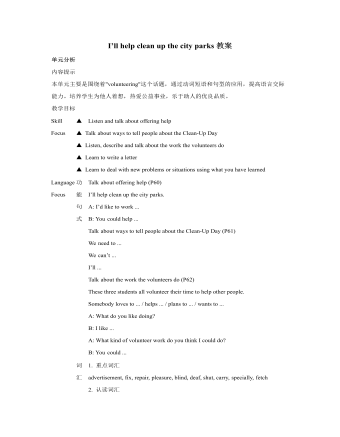
人教版新目标初中英语九年级下册I’ll help clean up the city parks教案
- 页数:13页
- |大小:547.50KB
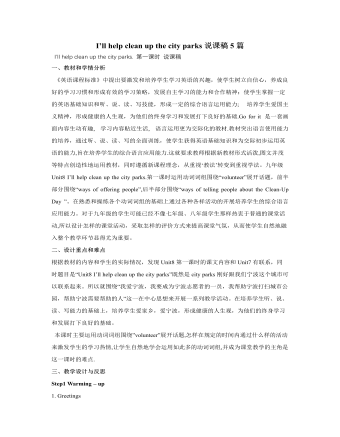
人教版新目标初中英语九年级下册I’ll help clean up the city parks说课稿5篇
- 页数:17页
- |大小:95.50KB
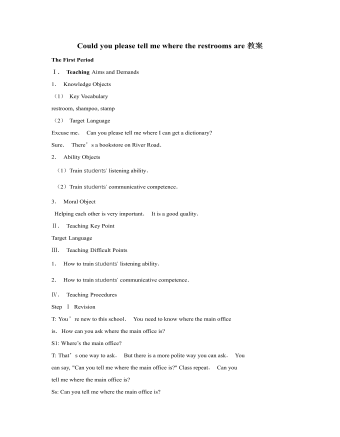
人教版新目标初中英语九年级下册Could you please tell me where the restrooms are教案
- 页数:14页
- |大小:99.00KB
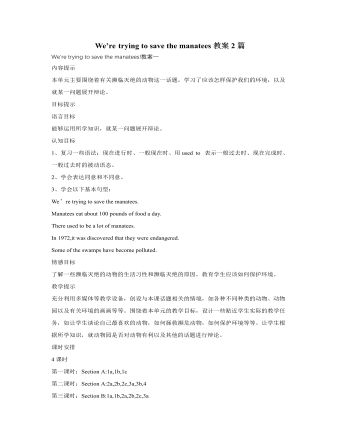
人教版新目标初中英语九年级下册We’re trying to save the manatees教案2篇
- 页数:16页
- |大小:146.50KB
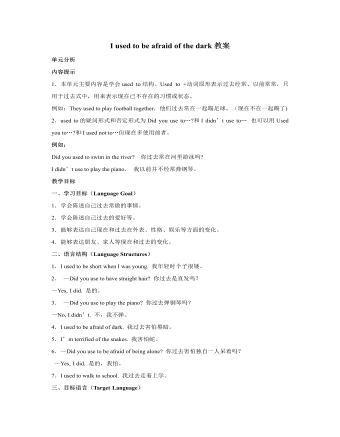
人教版新目标初中英语九年级上册I used to be afraid of the dark教案
- 页数:14页
- |大小:670.50KB
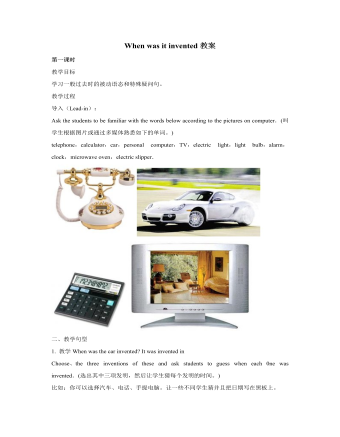
人教版新目标初中英语九年级下册When was it invented教案
- 页数:12页
- |大小:586.50KB
热门课件教案
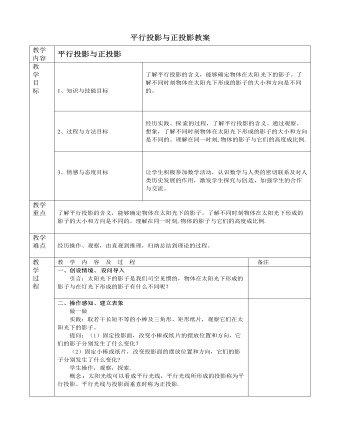
北师大初中数学九年级上册平行投影与正投影2教案
- 页数:2页
- |大小:453.50KB
- 课件教案
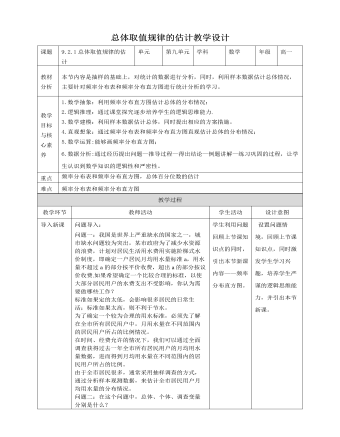
人教A版高中数学必修二总体取值规律的估计教学设计
- 页数:12页
- |大小:821.00KB
- 课件教案

人教A版高中数学必修一诱导公式教学设计(1)
- 页数:9页
- |大小:180.22KB
- 课件教案
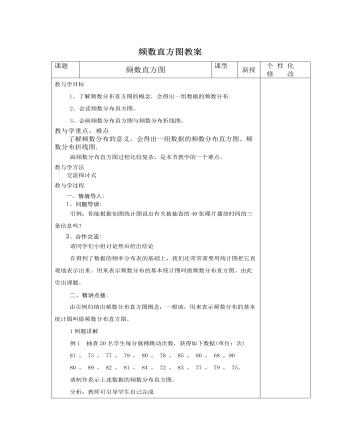
北师大初中七年级数学上册频数直方图教案2
- 页数:5页
- |大小:71.50KB
- 课件教案
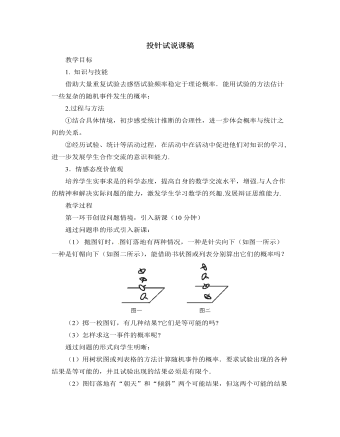
北师大版初中数学九年级上册投针试说课稿
- 页数:3页
- |大小:204.00KB
- 课件教案
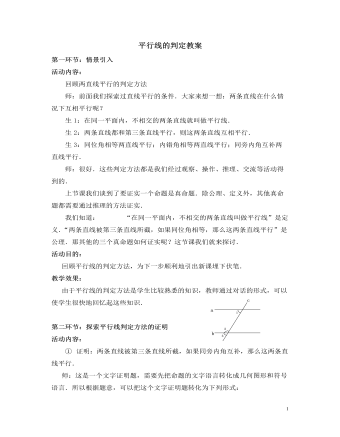
北师大初中数学八年级上册平行线的判定2教案
- 页数:5页
- |大小:1M
- 课件教案
今日更新
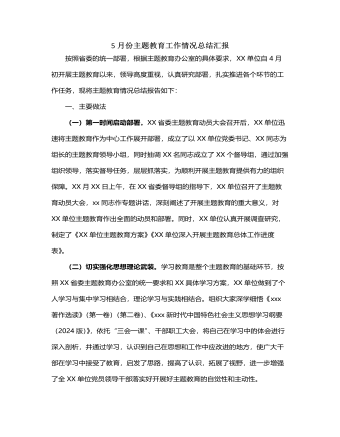
5月份主题教育工作情况总结汇报
- 页数:3页
- |大小:136.87KB

××县招商局2024年上半年工作总结
- 页数:12页
- |大小:142.54KB
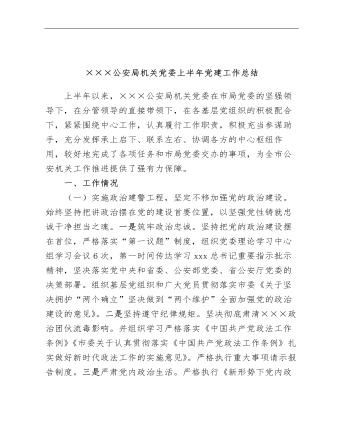
×××公安局机关党委上半年党建工作总结
- 页数:7页
- |大小:186.25KB

《2019—2024年全国党政领导班子建设规划纲要》实施情况的工作总结3800字
- 页数:6页
- |大小:29.16KB
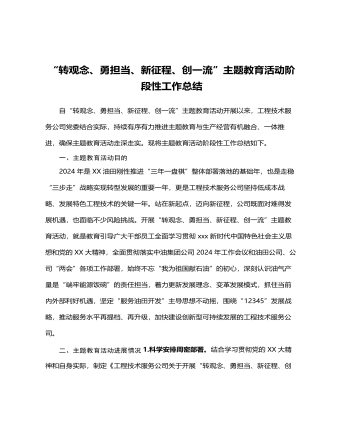
“转观念、勇担当、新征程、创一流”主题教育活动阶段性工作总结
- 页数:3页
- |大小:22.76KB

“四零”承诺服务创建工作总结
- 页数:5页
- |大小:39.83KB





